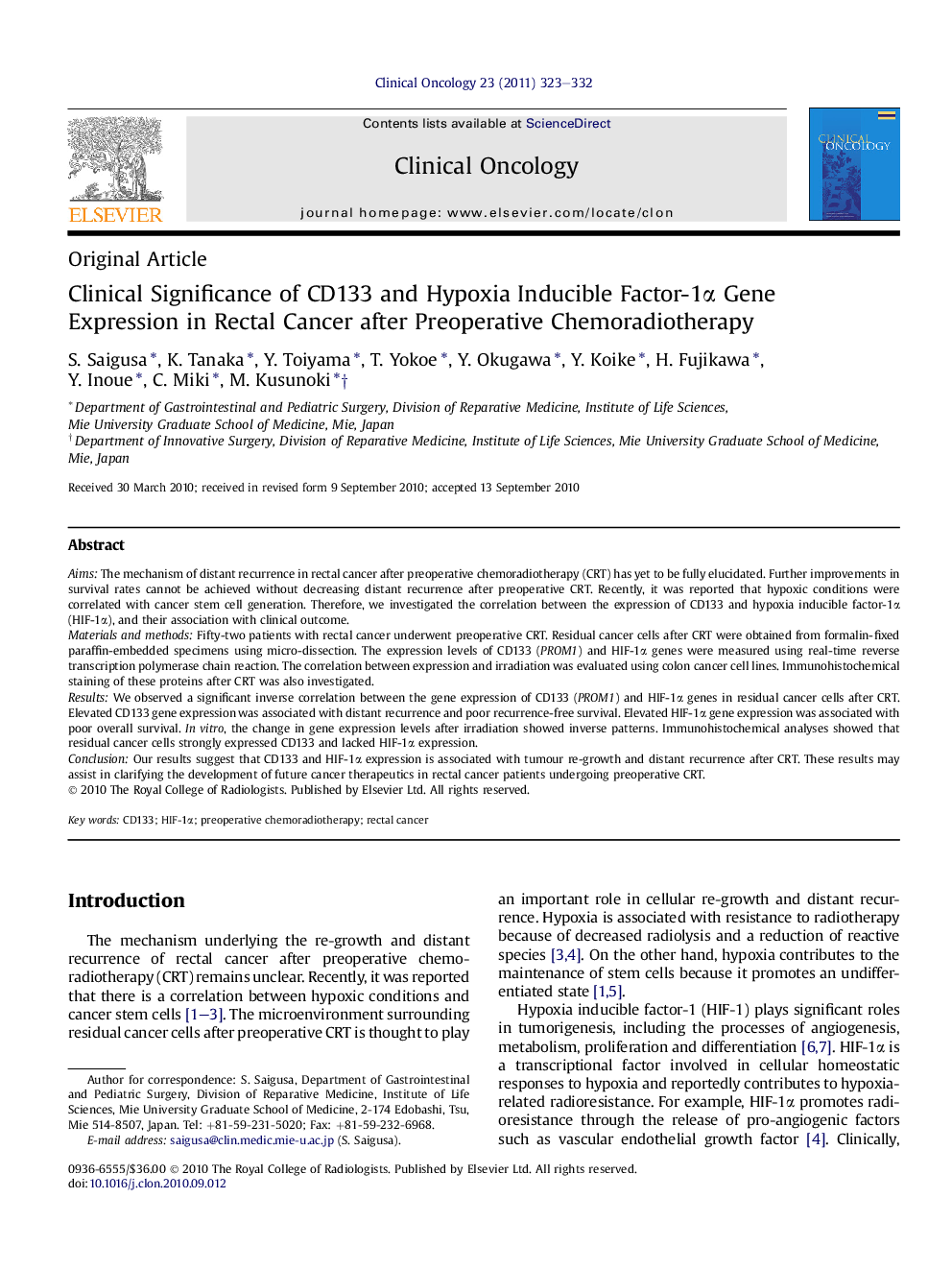| Article ID | Journal | Published Year | Pages | File Type |
|---|---|---|---|---|
| 5699232 | Clinical Oncology | 2011 | 10 Pages |
AimsThe mechanism of distant recurrence in rectal cancer after preoperative chemoradiotherapy (CRT) has yet to be fully elucidated. Further improvements in survival rates cannot be achieved without decreasing distant recurrence after preoperative CRT. Recently, it was reported that hypoxic conditions were correlated with cancer stem cell generation. Therefore, we investigated the correlation between the expression of CD133 and hypoxia inducible factor-1α (HIF-1α), and their association with clinical outcome.Materials and methodsFifty-two patients with rectal cancer underwent preoperative CRT. Residual cancer cells after CRT were obtained from formalin-fixed paraffin-embedded specimens using micro-dissection. The expression levels of CD133 (PROM1) and HIF-1α genes were measured using real-time reverse transcription polymerase chain reaction. The correlation between expression and irradiation was evaluated using colon cancer cell lines. Immunohistochemical staining of these proteins after CRT was also investigated.ResultsWe observed a significant inverse correlation between the gene expression of CD133 (PROM1) and HIF-1α genes in residual cancer cells after CRT. Elevated CD133 gene expression was associated with distant recurrence and poor recurrence-free survival. Elevated HIF-1α gene expression was associated with poor overall survival. In vitro, the change in gene expression levels after irradiation showed inverse patterns. Immunohistochemical analyses showed that residual cancer cells strongly expressed CD133 and lacked HIF-1α expression.ConclusionOur results suggest that CD133 and HIF-1α expression is associated with tumour re-growth and distant recurrence after CRT. These results may assist in clarifying the development of future cancer therapeutics in rectal cancer patients undergoing preoperative CRT.
